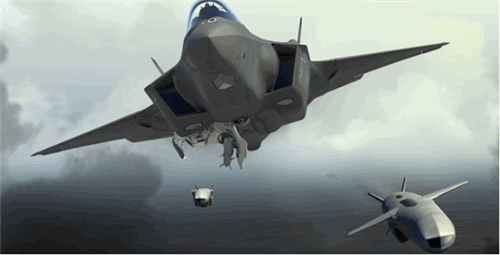Editor’s Note: One of the basic tenets of American policy after the formation of the japanese armed forces in 1954 was that US would provide the external military capabilties of the the Alliance, while the Japanese would maintain a defensive posture. The North Koreans have changed that equation significantly. The landscape of East Asia is changing dramatically. Japan-Gazer takes it on this morning. With all the shit going on in the Middle East, this adds a significant wild card- and the biggest expansion in mission for the Japanese since 1954 when the military was re-formed.
– Ed.
09 December 2017
Japanese Self Defense Forces (JSDF) To Get A Long-range Strike Capability

Reading & listening to Japanese commentators discussing the issue, here are some things they mentioned:
(1) OK, all well and good to buy these missiles, but where is the government’s due diligence? I mean, shouldn’t the Constitution be revised so the controversy over these types of weapons can be eliminated?
(2) JSDF possessing these types of long-range weapons is meaningless unless JSDF also has the capability to identify and locate the targets they are supposed to hit. And it seems that JSDF can’t really do effective targeting, and North Korean missiles launchers are mobile, and therefore too hard to take out…
(3) It is always good for JSDF to receive/develop newer, better, and more powerful weapons, since the continental Asian countries only respect strength. Japan needs to show it is serious about being strong, for that is what makes deterrence work.
(4) Sounds like MOD got serious about recent POTUS Trump’s urging to “buy American.”
(5) Wait a minute. The whole basis of the (symbiotic) U.S.-Japan alliance is that American forces provide the offensive “spear” while JSDF serves as the defensive “shield.” MOD’s acquisition of these long-range strike missiles could change/skew the traditional roles and functions of the bilateral alliance, and who can tell where that might lead to…
= = = = = = = = = = = = = = = = = = = =

(Raytheon rendering of an F-35A delivering two Joint Strike Missiles)
TOKYO (Reuters, 08 DEC 2017) — Japan is to acquire medium-range, air-launched cruise missiles, capable of striking North Korea, a controversial purchase of what will become the longest-range munitions of a country that has renounced the right to wage war.
Defence Minister Itsunori Onodera did not refer to North Korea when announcing the planned acquisition and said the new missiles would be for defence, with Japan still relying on the United States to strike any enemy bases.
“We are planning to introduce the JSM (Joint Strike Missile) that will be mounted on the F-35A (stealth fighter) as ‘stand-off’ missiles that can be fired beyond the range of enemy threats,” Onodera told a news conference.
Japan is also looking to mount Lockheed Martin Corp’s extended-range Joint Air-to-Surface Standoff Missile (JASSM-ER) on its F-15 fighters, he said.
The JSM, designed by Norway’s Kongsberg Defence & Aerospace , has a range of 310 miles. The JASSM-ER can hit targets at twice the distance- or all the way to North Korea from Japanese air space.
The purchase plan is likely to face criticism from opposition parties in parliament, especially from politicians wary of the watering down of Japan’s renunciation of the right to wage war enshrined in its post-World War Two constitution.
But the growing threat posed by North Korean ballistic missiles has spurred calls from politicians, including Onodera, for a more robust military that could deter North Korea from launching an attack.
Japan’s missile force has been limited to anti-aircraft and anti-ship munitions with ranges of less than 300 km (186 miles).
The change suggests the growing threat posed by North Korea has given proponents of a strike capability the upper hand in military planning.
North Korea has recently test-fired ballistic missiles over Japan and last week tested a new type of intercontinental ballistic missile that climbed to an altitude of more than 4,000 km before splashing into the sea within Japan’s exclusive economic zone.
Copyright 2017 Japan-Gazer. Article copyright Reuters
www.vicsocotra.com
